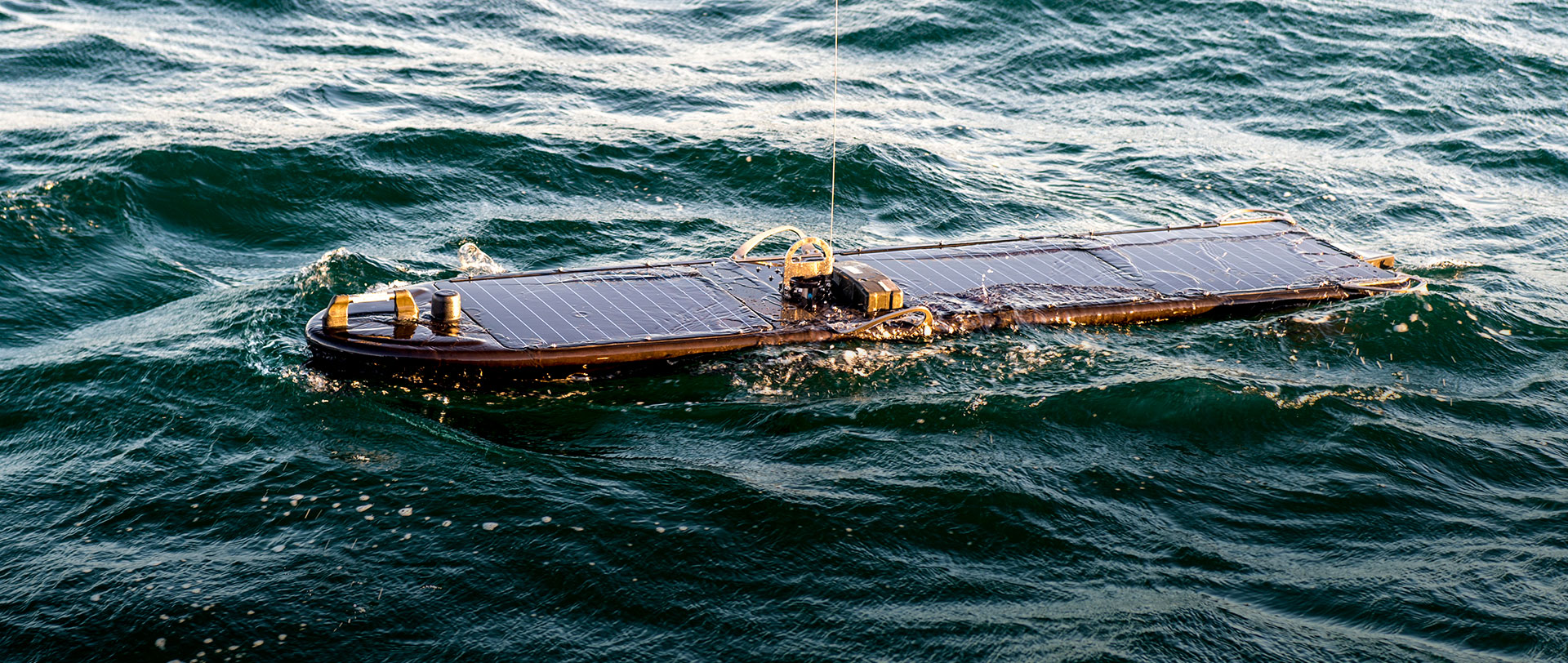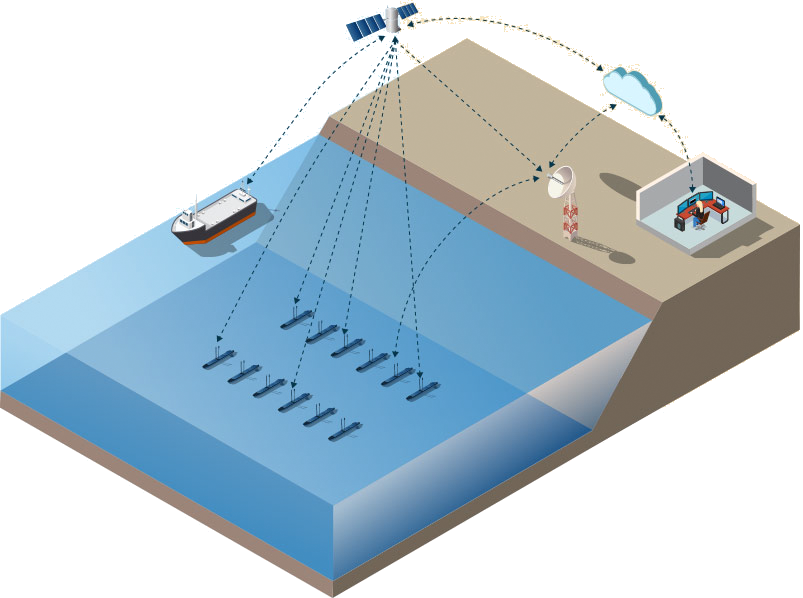-

The ocean is full of power and information. The Wave Glider is designed to capture both. With the latest advancements in energy harvesting and propulsion, combined with a payload and sensor architecture, the Wave Glider is a persistent mobile data-gathering platform.
Energy Harvesting Ocean Robot
Energy Harvesting Ocean Robot
The ocean is full of power and information. The Wave Glider is designed to capture both. With the latest advancements in energy harvesting and propulsion, combined with a payload and sensor architecture, the Wave Glider is a persistent mobile data-gathering platform.

